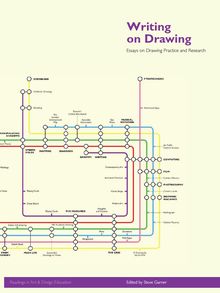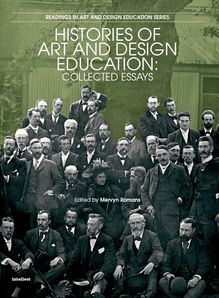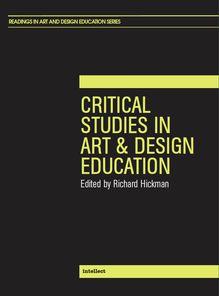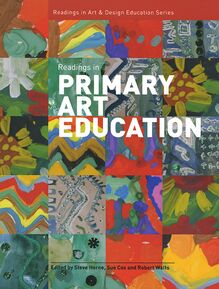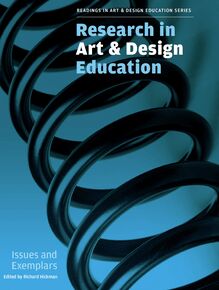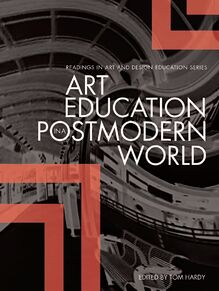-
 Univers
Univers
-
 Ebooks
Ebooks
-
 Livres audio
Livres audio
-
 Presse
Presse
-
 Podcasts
Podcasts
-
 BD
BD
-
 Documents
Documents
-
- Cours
- Révisions
- Ressources pédagogiques
- Sciences de l’éducation
- Manuels scolaires
- Langues
- Travaux de classe
- Annales de BEP
- Etudes supérieures
- Maternelle et primaire
- Fiches de lecture
- Orientation scolaire
- Méthodologie
- Corrigés de devoir
- Annales d’examens et concours
- Annales du bac
- Annales du brevet
- Rapports de stage
La lecture à portée de main
Vous pourrez modifier la taille du texte de cet ouvrage
Découvre YouScribe en t'inscrivant gratuitement
Je m'inscrisDécouvre YouScribe en t'inscrivant gratuitement
Je m'inscrisEn savoir plus
Vous pourrez modifier la taille du texte de cet ouvrage
En savoir plus

Description
Sujets
Informations
| Publié par | Intellect Books |
| Date de parution | 01 janvier 2007 |
| Nombre de lectures | 0 |
| EAN13 | 9781841509570 |
| Langue | English |
Informations légales : prix de location à la page 0,1900€. Cette information est donnée uniquement à titre indicatif conformément à la législation en vigueur.
Extrait
The Problem of Assessment in Art and Design
Edited by Trevor Rayment
Series editor: John Steers
First published in the UK in 2007 by Intellect
Books, PO Box 862, Bristol BS99 1 DE, UK
First published in the USA in 2007 by Intellect Books, The University of Chicago Press, 1427 E. 60th Street, Chicago, IL 60637, USA
Copyright 2007 NSEAD
All rights reserved. No part of this publication may be reproduced, stored in a retrieval system, or transmitted, in any form or by any means, electronic, mechanical, photocopying, recording, or otherwise, without written permission.
A catalogue record for this book is available from the British Library
Cover Design: Gabriel Solomons
Copy Editor: Holly Spradling
Typesetting: Mac Style, Nafferton, E. Yorkshire
ISBN 978-1-84150-145-1 / Electronic 978-1-84150-957-0
ISSN 1474-6208
Printed and bound in Great Britain by The Cromwell Press
Contents
Acknowledgements
Preface
Introduction: The problem of assessment in art and design
Trevor Rayment
Chapter 1: The impact of formal assessment procedures on teaching and learning in art and design in secondary schools
Rachel Mason and John Steers
Chapter 2: Assessment in art and design in the primary school
Gill Hopper
Chapter 3: The assessment of GCSE Art: Criterion-referencing and cognitive abilities
Trevor Rayment and Brian Britton
Chapter 4: AS Level Art: Farewell to the Wow factor?
Tom Hardy
Chapter 5: Striving for appropriate, reliable and manageable vocational assessment
Sylvia Willerton
Chapter 6: Portfolio development in a secondary teaching credential art program
Mika Cho
Chapter 7: (In defence of) whippet-fancying and other vices: Re-evaluating assessment in art and design
Richard Hickman
Chapter 8: Towards a more complex description of the role of assessment as a practice for nurturing strategic intelligence in art education
Leslie Cunliffe
Chapter 9: Assessment in educational practice: Forming pedagogized identities in the art curriculum
Dennis Atkinson
Notes on contributors
Index
Acknowledgements
I am much indebted to the authors: to those who have kindly allowed their papers to be reprinted here, and to those who have revised a paper or written a chapter specifically for this collection. There is little material reward for work such as this, but I hope the writers will be satisfied to have made an important contribution to our understanding of a somewhat neglected area of art and design education.
I am grateful to Intellect Books, Blackwell Publishing, NSEAD and the Editorial Board of The International Journal of Art Design Education , who collectively have made this enterprise possible.
Finally, I should like to thank my colleague Fraser Smith for his forbearance, and my wife, Janet, and daughter, Sarah, for their endless support and encouragement.
Trevor Rayment
Preface
This book is the fourth in a planned series of anthologies dealing with a range of issues in art and design education. Titles published to date are Critical Studies in Art Design Education, Histories of Art and Design Education and Art Education in a Postmodern World. The primary, but not exclusive, source of chapters are papers previously published in the International Journal of Art Design Education and where appropriate these have been updated. It should be noted that any references to the English National Curriculum statutory Orders etc. are to that version of the curriculum current at the time of the original publication.
The National Society for Education in Art and Design is the leading national authority in the United Kingdom, combining professional association and trade union functions, which represents every facet of art, craft and design in education. Its authority is partly based upon a century-long concern for the subject, established contacts within government and local authority departments, and a breadth of membership drawn from every sector of education from the primary school to universities. More information is available at www.nsead.org or from NSEAD, The Gatehouse, Corsham Court, Corsham, Wiltshire SN13 OBZ (Tel: +44 (0)1249 714825).
John Steers
Series Editor
Introduction: The problem of assessment in art and design
Trevor Rayment
The procedures and purposes of assessment are not comfortably accommodated within the realms of art education. The constraints of an assessed curriculum and the consequent need to define practice that can be described as good , appropriate or desirable are anathema to many teachers of art and design. Arguably, there is a logical basis for art teachers hostility, beyond their alleged instinctive resistance to regulation and conformity. Art is unique and therefore indefinable, and to attempt any kind of substantive definition would be effectively to deny options for creative progress or divergence. The questions and associated self-doubts that such assertions raise are not difficult to identify. How can one teach what cannot be defined? And, then, how can one assess what cannot be specified or taught? If then there is a problem with assessment in art and design education, the question of definition would seem to lie at the very heart of it.
In 1966 Ralph Smith wrote: Art education today is engaged in clarifying its conceptual foundations and in defining its relations to other disciplines of thought and action. 1 Forty years on, it is still difficult to detect substantial progress in that process of engagement. There have been significant innovations to the school-based art and design curriculum during the intervening years, most notably the integration of critical and contextual elements within practice, and the introduction of criterion-referenced assessment, by which students work is judged against a set of agreed assessment criteria or objectives. However, it is apparent from ongoing debate that art and design is still in need of a coherent and convincing rationale for its application in schools.
In order to dispel some of the confusion surrounding the subject, the discussion begins with a critical overview of the development of assessment in school-based art and design over recent decades. Rachel Mason and John Steers guide us skilfully through this recent history, and the reader is left in no doubt about the many conceptual and procedural inadequacies that have characterized progress . The authors of this chapter were recently involved in a thorough and systematic review of published research on the impact of assessment on the secondary art and design curriculum. They found a scarcity of empirical research in this area, which may go some way towards explaining those perceived deficiencies, but such work as was relevant to that study, and, therefore, to this collection, is also set out concisely here in Chapter 1.
The next three chapters explore current issues of specific concern to the main phases of school-based art education. From an initial historical analysis, Gill Hopper develops a comprehensive account of the assessment of art at primary school level. The problem of definition is still apparent, and it is difficult to escape the conclusion that many of the perceived inadequacies of assessment in art are directly attributable to a failure to understand the form that a genuinely meaningful and creative art curriculum might take. The argument could be legitimately made that examination assessment objectives have themselves provided a definition of a kind. These given criteria are similar for all UK GCSE and A level examinations, and, on the face of it, they are clear enough and prescriptive enough to allow structured art and design courses to function and to enable some kind of assessment to take place. My own research (Chapter 3) tends to support the proposition that the criteria do indeed facilitate an objective measurement of performance. What this actually tells us in terms of students creative achievements and whether it is helpful or appropriate is another matter entirely. Indeed, it is frequently argued that the school examination system s unbending insistence on conformity with common assessment criteria has led to the widespread adoption of predictable and orthodox approaches by teachers anxious to affirm their status, both in a curriculum that still embraces an implicit academic hierarchy and within the public arena of examination success. As a practising teacher, Tom Hardy is only too aware of the constraints and pressures placed on teachers and students by the current examination procedures, and in Chapter 4 he makes a passionate plea for a radical revision of these and, in particular, the controversial AS Level exam. Hardy s chapter gives us graphic evidence of the intensity of political debate that may be engendered by arguments about issues that, to the outsider, must seem like the unexceptional detail of curriculum reform .
GNVQ was intended to offer a high-quality alternative to GCE A Level, but its problematic development and eventual reorganization, discussed in Chapter 5 by Sylvia Willerton, provide a good illustration of some of the generic problems that have characterized formal assessment in art and design, as well as highlighting sensitive issues of parity between academic and vocational courses. It was always intended that portfolio evidence should comprise a major component of GNVQ and, indeed, several of the papers in this collection recommend the further consideration of portfolio work as a way forward in the quest for more effective means of assessment in art and design. In Chapter 6, a parallel, but distinctively American, practice of portfolio assessment is described by Mika Cho as she explores its effectiveness in evaluating the overall performance of trainee teachers. This chapter will be of particular interest to all trainee teachers of art, who will be at a stage in their professional development where, for the first time, they are forced to confront issues both of their own assessment and the assessment of th
-
 Univers
Univers
-
 Ebooks
Ebooks
-
 Livres audio
Livres audio
-
 Presse
Presse
-
 Podcasts
Podcasts
-
 BD
BD
-
 Documents
Documents
-
Jeunesse
-
Littérature
-
Ressources professionnelles
-
Santé et bien-être
-
Savoirs
-
Education
-
Loisirs et hobbies
-
Art, musique et cinéma
-
Actualité et débat de société
-
Jeunesse
-
Littérature
-
Ressources professionnelles
-
Santé et bien-être
-
Savoirs
-
Education
-
Loisirs et hobbies
-
Art, musique et cinéma
-
Actualité et débat de société
-
Actualités
-
Lifestyle
-
Presse jeunesse
-
Presse professionnelle
-
Pratique
-
Presse sportive
-
Presse internationale
-
Culture & Médias
-
Action et Aventures
-
Science-fiction et Fantasy
-
Société
-
Jeunesse
-
Littérature
-
Ressources professionnelles
-
Santé et bien-être
-
Savoirs
-
Education
-
Loisirs et hobbies
-
Art, musique et cinéma
-
Actualité et débat de société
- Cours
- Révisions
- Ressources pédagogiques
- Sciences de l’éducation
- Manuels scolaires
- Langues
- Travaux de classe
- Annales de BEP
- Etudes supérieures
- Maternelle et primaire
- Fiches de lecture
- Orientation scolaire
- Méthodologie
- Corrigés de devoir
- Annales d’examens et concours
- Annales du bac
- Annales du brevet
- Rapports de stage

